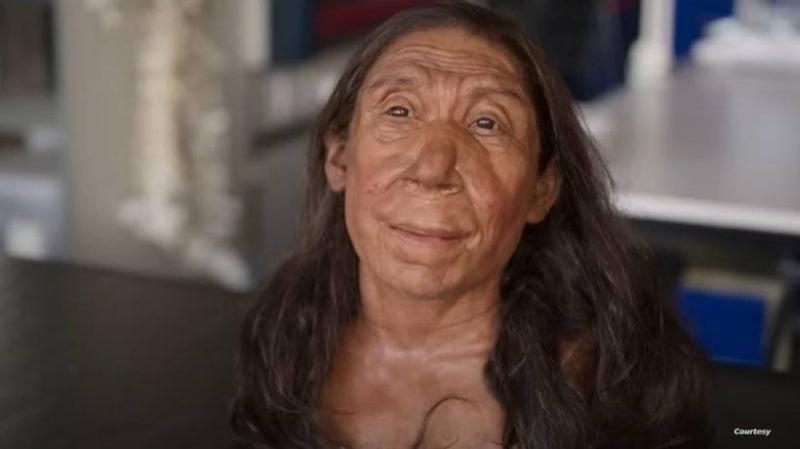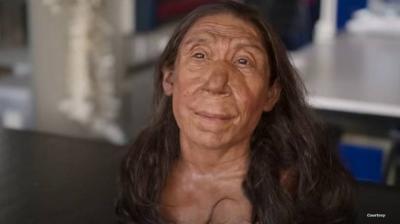Archaeologists have reconstructed the face of a Neanderthal woman, the closest ancestral form to modern humans, who lived approximately 75,000 years ago in a cave in northern Iraq. The British newspaper "Independent" reported that the skeletal remains of the woman, named Shanidar Z, were first discovered in 2018 in Shanidar Cave, which is believed to have been used for burials.
Additionally, studies conducted since the 1950s have shown that Neanderthals buried their dead in the cave located in the Zagros Mountains of Erbil province, performing funerary rituals, such as placing bodies on beds of flowers. Evidence gathered from the cave site indicates that Neanderthals were much more advanced than the primitive creatures that many believed were characterized by a stout body frame and ape-like brows.
Although Neanderthals are thought to have gone extinct around 40,000 years ago and possessed skulls that were quite different from those of modern humans, the reconstructed face of this prehistoric woman, believed to have been in her forties at the time of her death, shows that their appearance was very close to that of humans.
These findings were revealed in a new documentary titled "The Secrets of Neanderthals," produced by the BBC and recently released on the Netflix platform. The newspaper quoted Cambridge University archaeologist Emma Pomeroy stating that "Neanderthal skulls have large brow ridges and lack chins, with a pronounced face that makes their noses more prominent." Pomeroy added, "However, the reconstructed face suggests that those differences from modern human faces may not have actually existed."
Researchers noted that the remains of the woman, including a flat skull about 2 cm thick, are among the best-preserved Neanderthal fossils found this century. According to the newspaper, the woman's skull is believed to have been crushed shortly after her death, likely due to falling rocks.
After carefully removing the woman's remains, including her skeleton up to the waist, Cambridge researchers used a glue-like substance to reinforce the bones and surrounding remains. Scientists then assembled over 200 pieces of her skull to restore it to its original shape, including her upper and lower jaws. Afterward, researchers scanned the surface of the reconstructed skull and printed it using 3D printing technology, adding layers of synthetic muscle and skin to reveal her face.
The woman's skeleton is the fifth to be found among a group of bodies buried around the same time at the same site, behind a 2-meter tall vertical rock within the cave. Neanderthals, known for their prominent brow ridges, lived in Europe and Asia around 350,000 years ago before going extinct about 35,000 years ago, after modern humans, who first appeared in Africa about 200,000 years ago, settled in the areas where Neanderthals lived.
Scientists say that Neanderthals were intelligent and engaged in complex hunting strategies, possibly using spoken language and symbolic tools, in addition to having a complex use of fire. Many scientists previously thought that Neanderthals were very stupid and clumsy and could not survive against the more adept and intelligent modern humans who invaded their territory.




